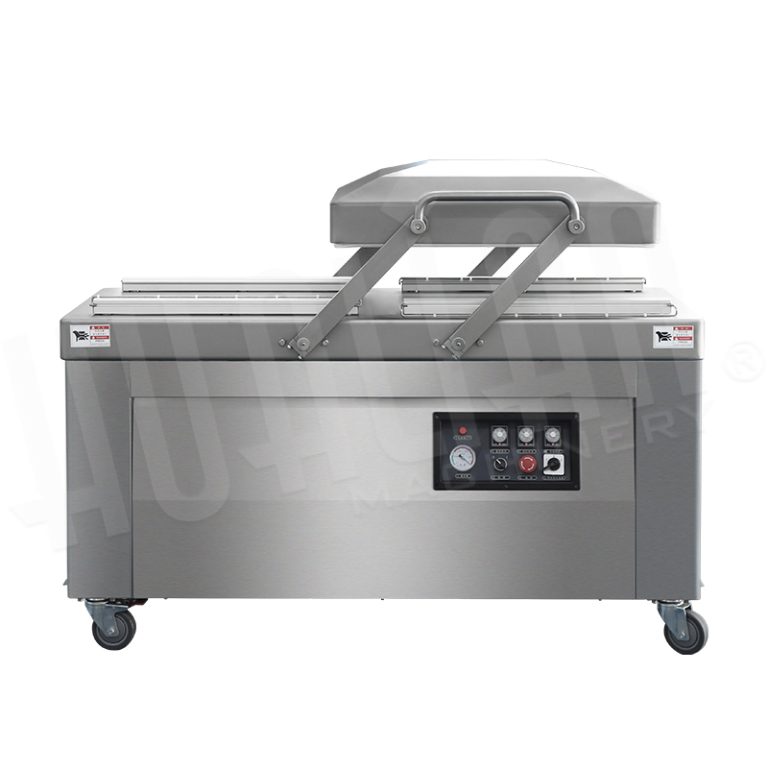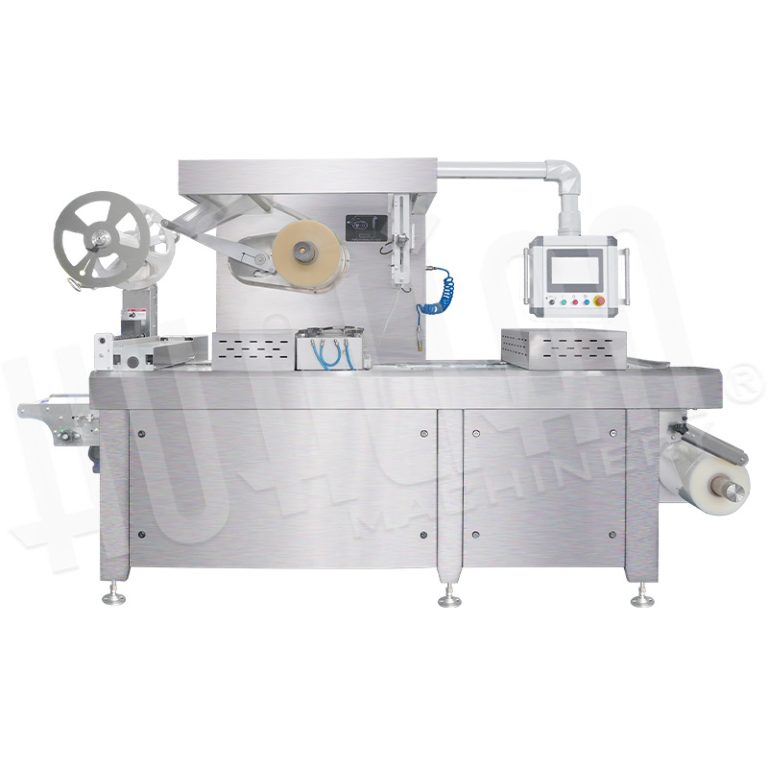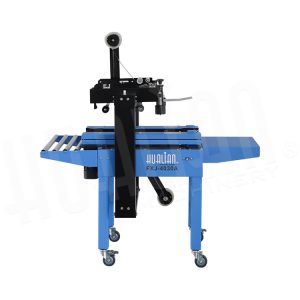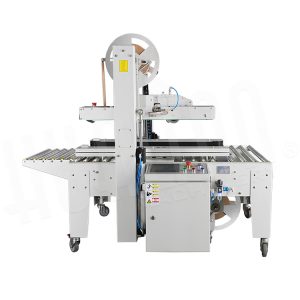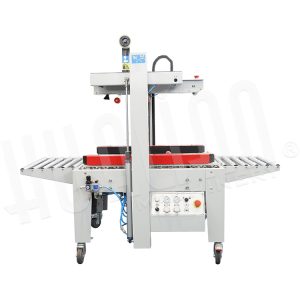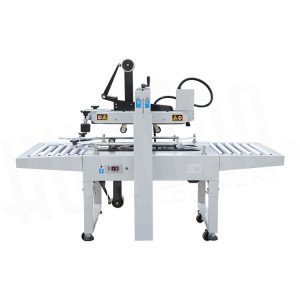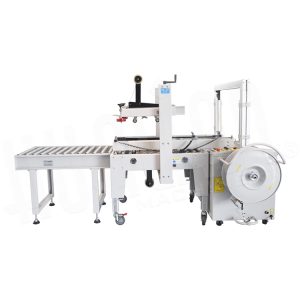In today’s production environment, reliable sealing machines are critical to ensuring product quality and production efficiency. Machine malfunctions can not only result in costly downtime, but also waste products and even affect overall profitability.
With proper daily maintenance, most problems can be prevented in advance. This guide provides a comprehensive overview of sealing machine maintenance methods to help you keep your equipment in top condition.
Table of Contents
ToggleWhy Is Sealing Machine Maintenance So Critical?
In short, regular maintenance is not optional—it is essential. Neglecting it can lead to the following issues:
- Reduced efficiency and unstable performance: Machines that are not properly maintained may slow down, resulting in uneven sealing and a delayed production line.
- High repair costs: Small issues, such as worn sealing belts, can escalate into major failures of heating elements or motors, resulting in costly repairs.
- Product waste: Poor sealing or leaks can compromise packaging integrity, leading to product damage and customer dissatisfaction.
- Reduced lifespan: High-quality machines are designed to last for many years, but inadequate maintenance can significantly shorten their lifespan.

Get Your Band Sealer Today!
General Maintenance Best Practices
To keep your sealing machine running efficiently for a long time, it is essential to have a fixed maintenance plan. Don’t worry, it’s not complicated. Just follow the daily, weekly, monthly, and annual checklists to avoid a lot of trouble.
Here is the content presented in a concise table format.
| Checklist | Task | Frequency |
| Daily | Clean sealing area, check for debris, inspect heating elements & Teflon tape, verify temperature & pressure settings. | Daily (After each shift) |
| Weekly | Inspect & clean sealing bands, lubricate moving parts, check belts & rollers, inspect & clean cutter blades. | Weekly |
| Monthly | Deep clean, check electrical connections, calibrate temperature sensors, inspect & replace consumables. | Monthly |
| Annual | Comprehensive component inspection, lubrication & calibration, replace high-wear parts, consider professional servicing. | Annually |
#1 Daily Checklist
This is your go-to list for keeping things running smoothly every day.
- Clean the sealing area: After each shift, wipe down the sealing jaws, belts, or any contact surfaces to remove any dust, residue, or film buildup. This prevents residue from gumming up the works and leading to poor seals.
- Check for film or bag debris: Clear any small pieces of plastic or other debris that might have fallen into the machine. Jams are a leading cause of downtime.
- Inspect heating elements and Teflon tape: Look for any discoloration, fraying, or burns. A damaged Teflon tape can cause film to stick to the heating element, resulting in an immediate jam.
- Verify temperature and pressure settings: Make sure your settings are correct for the material you’re sealing. Inconsistent temperature is a common cause of weak or burnt seals.
#2 Weekly Checklist
Once a week, perform a deeper inspection.
- Inspect and clean the sealing bands (for continuous band sealers): Check for any signs of wear, tearing, or stretching. A stretched band can cause inconsistent movement. Clean any residue off the bands with a soft cloth.
- Lubricate moving parts: Apply a food-grade lubricant to all moving gears, bearings, and chains according to the manufacturer’s manual. This reduces friction and prevents wear.
- Check belts and rollers: On continuous sealers, check the condition and tension of the conveyor and sealing belts. On vacuum sealers, inspect the condition of the vacuum chamber lid and gasket.
- Inspect and clean cutter blades: If your machine has a cutting function, check the blade for sharpness and any film buildup. A dull blade can cause uneven cuts or tears.
#3 Monthly Checklist
Once a month, take some time for more in-depth maintenance.
- Deep clean: Disconnect the machine and give it a thorough cleaning, including hard-to-reach areas. Use compressed air to remove dust and debris from internal components.
- Check electrical connections: Ensure all wires and connections are secure and free from damage. Loose connections can lead to power fluctuations and machine failure.
- Calibrate temperature sensors: Verify that the temperature display on your machine is accurate. Over time, sensors can become inaccurate, leading to inconsistent seals.
- Inspect and replace consumables: Keep a stock of essential parts like Teflon tape, sealing bands, and heating elements. Replace them proactively based on your usage and the manufacturer’s recommendations.
#4 Annual Checklist
Once a year, it’s time for a professional-level tune-up.
- Comprehensive component inspection: Perform a detailed inspection of all major components, including the motor, gears, and electrical system.
- Lubrication and calibration: Re-lubricate all moving parts and re-calibrate all sensors to factory specifications.
- Replace high-wear parts: Even if they still appear functional, consider replacing high-wear parts like sealing bands, belts, and bearings to prevent unexpected breakdowns.
- Professional servicing: For complex machines, consider having a certified technician from Hualian or a trusted partner perform an annual service. They can identify potential issues and ensure your machine is running at peak performance.

Order Hualian Tray Sealer Now!
Maintenance by Sealing Machine Type
#1 Continuous Band Sealers Maintenance Tips
- Sealing Bands: Regularly inspect the Teflon sealing bands. They are the most common wear part. If they become discolored, creased, or brittle, it’s time to replace them.
- Conveyor Belt: Check the tension and alignment of the conveyor belt. An improperly aligned belt can cause bags to seal crookedly or not at all.
- Motor and Gearbox: Listen for any unusual noises from the motor or gearbox. Ensure they are properly lubricated and free from debris.
#2 Vacuum Sealers Maintenance Tips
- Vacuum Pump Oil: Change the vacuum pump oil regularly as specified by the manual. Dirty or low oil can lead to a weak vacuum and eventual pump failure.
- Gasket: Inspect the lid gasket for cracks, tears, or compression. A damaged gasket will prevent the machine from pulling a strong vacuum.
- Sealing Bar: Keep the sealing bar and its heating element clean and free of food debris. Clean the Teflon cover strip over the element to prevent sticking.
#3 Tray Sealing Machines Maintenance Tips
- Sealing Plate and Film Cutter: Regularly clean the sealing plate and ensure the film cutter is sharp. Residue on the plate can cause inconsistent seals.
- Mold Cavities: For machines with molds, keep them clean. Any debris in the mold can prevent the tray from seating properly, leading to a faulty seal.
- Pneumatic System: Check the air lines and fittings for any leaks. A leak in the pneumatic system can cause inconsistent sealing pressure.

Automatic Tray Sealing Machine by Hualian!
Troubleshooting Common Sealing Machine Problems
Even with a great maintenance plan, issues can still arise. Here’s a quick guide to some common problems.
- Inconsistent or incomplete seals:
- Check temperature: Is the heating element at the right temperature for your film?
- Check pressure: Is there enough pressure on the sealing jaws or band to create a strong bond?
- Inspect the sealing surface: Is there any residue or damage on the sealing jaws or Teflon tape?
- Machine not sealing, but heating element is working:
- Check sealing pressure: The machine may be heating, but there is not enough pressure to fuse the film together.
- Inspect the sealing jaws/bands: Are they properly aligned and making full contact with the material?
- Machine is not pulling a strong vacuum (vacuum sealers):
- Check the lid gasket: A cracked or dirty gasket is the most common culprit.
- Verify the vacuum pump oil: Is the oil level sufficient and clean?
- Inspect the chamber: Look for any small tears or holes in the bag or on the inside of the chamber.
- Bags are tearing or melting:
- Lower the temperature: The temperature may be too high for the film thickness.
- Reduce the dwell time: The time the bag is held under heat may be too long.
- Adjust pressure: Too much pressure can cause thin film to tear.
Conclusion
Investing in a high-quality sealing machine is certainly important, but what truly maximizes its value is diligent daily maintenance. By following a detailed maintenance schedule, you not only protect your investment but also extend the equipment’s lifespan, ensuring your production line remains smooth and efficient at all times.
Hualian’s sealing machines are inherently durable, featuring multi-functionality, high performance, and strong adaptability. They offer fast sealing speeds, consistent quality, and support for various packaging materials and processes. With regular maintenance, they will continue to deliver outstanding performance for years to come.
In simple terms, choosing the right machine is just the beginning; diligent maintenance is the key to ensuring your investment retains its value over time.



FAQs
Why are my seals inconsistent, and what’s the first thing I should check?
The first thing to check is the sealing surface. Most inconsistent seals are caused by residue buildup on the sealing jaws or a worn-out Teflon tape. This prevents even heat transfer and pressure across the entire seal.
My machine’s heating element is working, but it’s not sealing. What could be the problem?
If the heating element is hot but the seal isn’t forming, the issue is almost always related to pressure. Check the pressure settings on your machine and inspect the sealing jaws or bands to make sure they are making full and even contact with the bag or film.
What are the biggest mistakes people make when maintaining their sealing machines?
The biggest mistake is ignoring the manufacturer’s manual and neglecting a regular cleaning schedule. Many issues, from poor seals to machine failure, can be prevented by simply cleaning the sealing area and checking for obvious wear on a daily basis.
How do I know when I need to replace a part, like the Teflon tape or sealing band?
You should replace these parts proactively. For Teflon tape, replace it when you see any discoloration, burns, or signs of fraying. For a sealing band, replace it if it becomes stretched, cracked, or is no longer moving smoothly. Waiting for a part to fail can cause damage to other, more expensive components.
My vacuum sealer isn’t pulling a strong vacuum. What should I check?
The first thing to check is the lid gasket. Over time, the rubber gasket can become dry, cracked, or compressed, preventing a proper seal. A quick wipe-down can sometimes fix the issue, but if it’s damaged, it will need to be replaced. If the gasket is in good condition, check the pump oil level and clarity.





